|
|
ADDRESS DURING THE 12TH CONVOCATION OF THE NATIONAL INSTITUTE OF FASHION TECHNOLOGY (NIFT), NEW DELHI
03-11-2005 : New Delhi
The Mission: Make India Fashion capital of the world.
I am delighted to participate in the 12th Convocation of the National Institute of Fashion Technology (NIFT). I take this opportunity to congratulate all the teachers, students and staff of NIFT and all those who have contributed in promoting excellence in educational standards of this Institute during the last two decades. I am happy to know that this Institute was established with an objective of generating the critical mass of highly competent technical professionals in the area of fashion design, technology and management capable of providing leadership to the Indian fashion business industry to become globally competitive. Within a short span of two decades, NIFT has made a mark in India and abroad. I am also happy to know that NIFT is providing consultancy for establishing Fashion Institutes in Mauritius, Bahrain and South Africa. I would like to discuss on the topic: "The Mission: Make India Fashion capital of the world."
Research and Teaching
Any Institute of national importance is judged by the level and extent of the original work it accomplishes. Such work sets in a regenerative cycle of excellence. Experience of original work leads to quality teaching and quality teaching imparted to the young in turn enriches the original work. Original and creative work brings transformation and development and also enhances the quality of education. I would suggest the seven institutes of NIFT can undertake research and applications in seven different areas of life style products relevant to global requirement and advise the industry partners so that they are prepared to foresee what will be the needs of the future market and deliver the right product at the right time in the right place. In addition, NIFT should also help emergence of more institutions under private sector as the country requires more such human resource. If NIFT fulfills this national task, it will also keep its leadership. Our researchers should look for newer designs based on rich Indian culture, which is spread in different parts of the country. India has a unique tradition of fusion of multi-cultures and this is really an important advantage given by the country. The fashion designers and technologists should use this input for fashion design. Now I would like to discuss certain aspects of capacity building in our educational institutions.
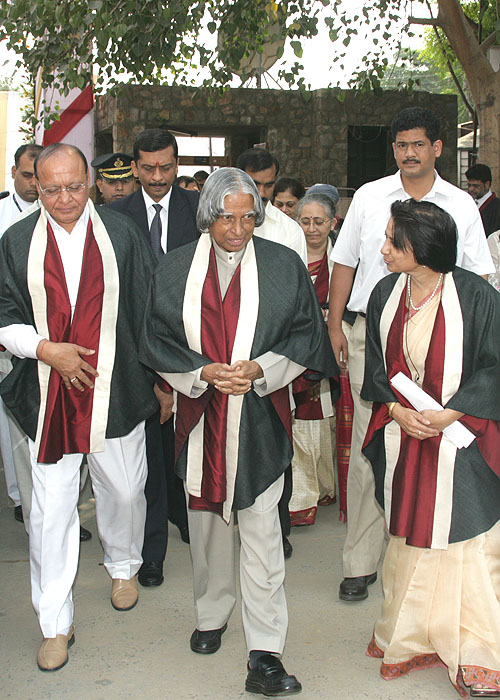

Capacity Building
A good educational model is the need of the hour to ensure that the students grow to contribute towards the economic growth of a nation. Can we sow the seeds of capacity building among the students? There will be continuous innovation during the learning process. To realize this, special capacities are required to be built in the education system for nurturing the students. The capacities, which are required to be built are: Research and Enquiry, Creativity and Innovation, Use of High technology, Entrepreneurial and Moral Leadership.
Research and Enquiry: The 21st century is about the management of all the knowledge and information we have generated and the value addition we bring to it. We must give our students the skills with which they find a way through the sea of knowledge that has been created in the fashion business in different parts of the world and continue with life long learning. Today, we have the ability, through technology, to really and truly teach ourselves to become the life-long learners. This is required for sustained delivery of the right product into the fashion market in the present global competitive scenario.
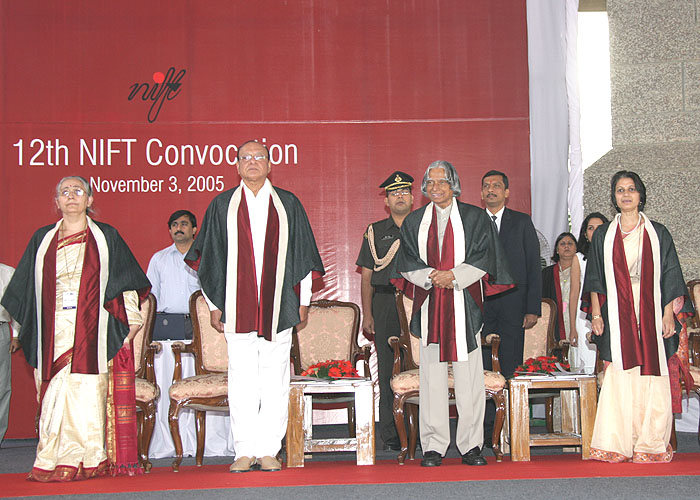
Creativity and innovation: The management of knowledge in the 21st century is beyond the capacity of a single individual. The amount of information that we have around is overwhelming. The management of knowledge therefore must move out of the realm of the individual and shift into the realm of the networked groups. The students must learn how to manage knowledge collectively. When the information is networked, the power and utility of the information grows as its square as predicted by Metcalfe's law. An information that is static does not grow. In the new digital economy information that is circulated creates innovation and contributes to national wealth. This circulation can take place between the students, faculty members, researchers and industry captains and also various potential customers in India and abroad. The creativity of the designer in beauty and comfort overwhelms the user and he or she doesn?t mind adopting the new design even though it involves certain sacrifices in cost. It has to be remembered that there is a buying power in India of minimum 300 million people. But the fashion design, which you make, should capture the minds of millions and millions globally. Can you make it?
Capacity to use high technology: Every student in the Institute should learn to know how to use the latest technologies for aiding their learning process. Institutes should equip themselves with adequate computing equipment, laboratory equipments, and Internet facilities and provide an environment for the students to enhance their learning ability. In the midst of all of the technological innovations and revolutions we cannot think, that the role of the teachers will be diminished. In fact the teacher will become even more important and the whole world of education will become teacher assisted and would help in ?tele-porting? the best teacher to every nook and corner of the country and propagate the knowledge. The NIFT can consider creating a network of the seven institutes located in different parts of the country to have common classroom based on the core strength of the particular NIFT. However such a networking should not reduce the competitive edge of any of these seven institutions. Fashion technology is based on imagination and continual innovation, which can penetrate the minds of customers. It transforms their life styles. Therefore, agility to market multiple ideas is required. Technology has to be a tool and not the master of imaginative processes of fashion design.
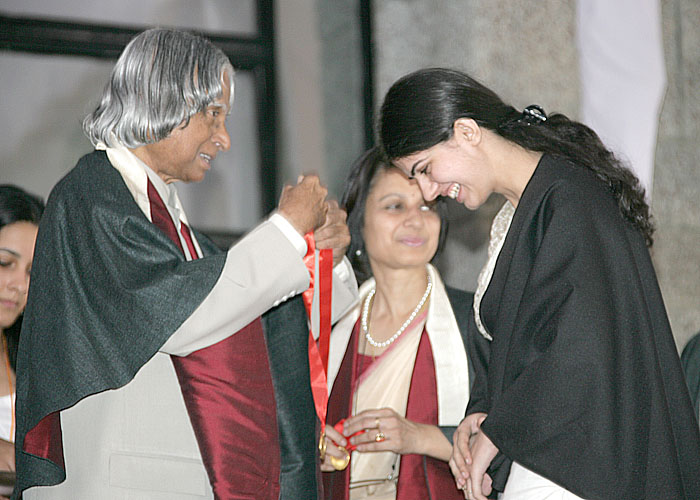
Entrepreneurship: The aptitude for entrepreneurship should be cultivated right from the beginning and in the institute environment. We must teach the fashion design students to take calculated risks for the sake of larger gain, but within the ethos of good business. They should also cultivate a disposition to do things right. This capacity will enable them to take up challenging tasks later. I would like the students of NIFT to become employment generators rather than being employment seekers. Now the NIFT organization has to design the curriculum and equip the teachers to build the entrepreneurial capacities among the students.
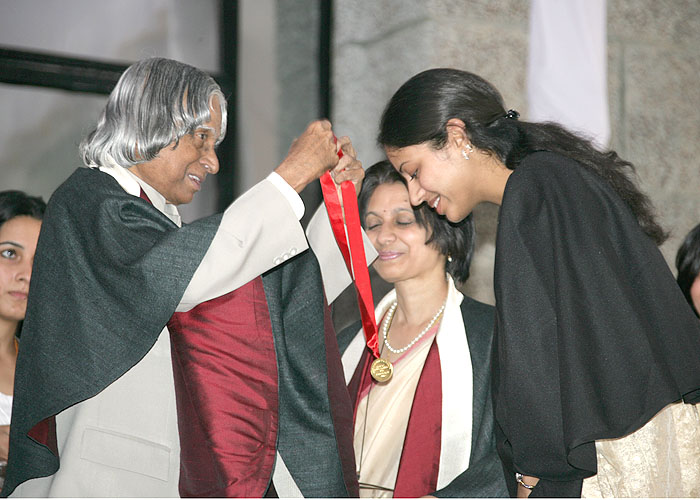
Moral leadership: Moral leadership involves two aspects. First it requires the ability to have compelling and powerful dreams or visions of human betterment. Moral leadership requires a disposition to do the right thing and influence others also to do right things. Fashion design needs to promote the higher values of humankind.
In sum: research and inquiry, creativity, technology, entrepreneurial and moral leadership are the five capacities to be built through the education process. If we develop in all our students these five capacities, we will produce ?Autonomous Learner? a self-directed, self controlled, lifelong learner who will have the capacity to both, respect authority and at the same time is capable of questioning authority, in an appropriate manner. These are the leaders who would work together as one of the "Self-organizing Network", and lead to the transformation of our nation into a prosperous country. The most important part of the education is to imbibe the confidence among the students is the spirit of "we can do it". These capacities will enable the students to meet the challenges of our national mission of transforming the nation into a developed country by 2020.
Now I would like to discuss some of the futuristic tasks, which can be taken up by NIFT for transforming fashion technology into wealth generating business.
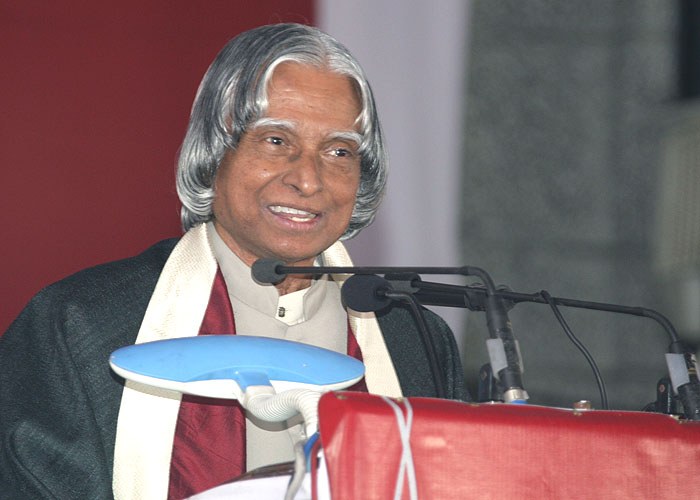

Embedding Fashion Technology into Textile Industry
Textile industry is very important for the Indian economy. The basic raw material is cotton. India is the third largest producer of cotton in the world. However, compared to the world average of 700 kgs of seed cotton per acre, we produce only 350 kgs of seed cotton per acre. It is indeed a technological concern for the nation. Few of the textile industries have adopted multi-villages in Punjab, which has brought out a cooperative movement of the farmers, scientists, trainers and the industry and launched for cultivating cotton in over 1200 acres. A training programme was launched for farmers starting with soil characterization, matching the cottonseed to soil, water and fertilizer management. The project resulted in increasing the average seed cotton yield of the village from 450 KG per acre to 950 KG per acre. This led to the seven-fold increase in net return per acre, due to considerable reduction in input costs. It is worth noting that in this case the yield is above the world average. This model has already been replicated in ten villages and can be emulated by many cotton-growing regions of the country. India can definitely produce 25% of the total world production of quality cotton compared to the existing 12% leading to revenue of over Rs. 25000 Cr. a year for the nation. The NIFT can have a linkage with agricultural research and the farming community to specify the special qualities needed in the cotton production for making the Indian cotton competitive in the international market.

Cotton Production and Garment Industry
I would like to link cotton production to garment and apparel export business, which is a low investment and large volume employment generator using the innovative ideas of fashion technology. Two centers are well known Tirupur in Tamilnadu and Ludhiana in Punjab. India is presently, exporting six billion dollars worth of garments, whereas with the WTO regime in place, we should aim to enhance the production and export of apparel and garments to over 18 to 20 billion dollars within the next three years. This will need intense collaboration between NIFT, Textile Research Associations, textile industrialists and the government. A mission mode programme should emerge. This will also be a large-scale generator of employment particularly in the rural areas. By tripling the export of apparels, we can add more than 5 million direct jobs and 7 million indirect jobs in allied sector, primarily in the cultivation of cotton. Concerted effort is needed in Cotton research, technology generation, transfer of technology, modernization and upgrading of ginning and pressing factories and aggressive marketing strategy. Students and faculty members should participate in the total activity from cotton research to marketing. This will be akin to the second green revolution for food grains. NIFT may initiate missions to embed fashion in our textile industry - big and small - so that Indian textile products from yarn to garments carry innovative ideas for the final fashion. Let me highlight the typical growth pattern in silk cotton industry in Kancheepuram.
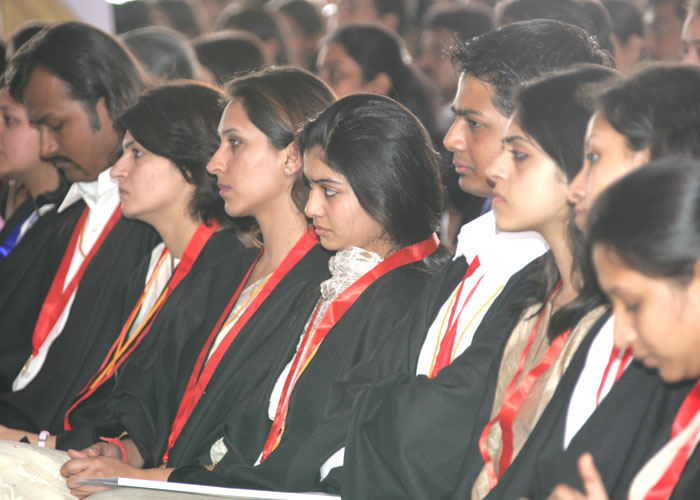

Kancheepuram Story
The silk industry in Kancheepuram is one of the fastest growing industries in India. The industry currently employs more than 30,000 weavers in the art of saree making. The industry had to compete with the synthetic fiber industry in many aspects. Some time back, this industry was on the brink of extinction due to the obsolescence of the designs and design making procedures. This is because, design adds splendor to a saree and forms an integral part of its exquisiteness. Introduction of computerized Jacquard borders in Kancheepuram silk saree has helped in the revival of the industry. The use of ICT has not only helped in creating new and complex designs but also reduced the time involved in the design. There has been an increase in the exports. The acceptance of these silk sarees by the consumers has also increased with the automation of designing process. Visualization of saree designs ahead of its production and the ability to create new color combination at the click of a mouse, has increased the flexibility and reduced the time for realizing new designs. Though the materials and the techniques are changing with the market demand, the motifs are still conventional to hold the custom and tradition of the Kancheepuram saree. The silk industry in Kancheepuram has transformed into a high growth industry by opening up new avenues for the traditional weavers through infusion of modern fashion technology. The example illustrates that computer aided design can help renewal of a traditional industry provided the new technology is simple to use and users are trained properly. Students and Faculty of NIFT can study this model and suggest creation of fashion technology products, which will further improve the marketability of Kancheepuram silk. Also, they can attempt to replicate this model in other garment producing areas such as Banaras, Gadhwal, Venkatagiri, Kota, Lucknow, Surat etc. so that Indian manufacturers can capture large volume of International orders for these products.

Networking
I have seen the website of NIFT. It has some good features like announcement of job opportunities, information about alumni, alumni meet, list of alumni etc. It has become a common platform for providing connectivity among nearly five thousand alumni and five thousand students of NIFT studying in seven campuses. The website can document the case studies and special achievements of the alumni and can assist new entrants in the fashion design industry and enterprises. You could also include provision for the students to ask questions about their specific problems connected with education, further studies, research and creation of an enterprise in different places in the country, which can be answered by the specialists, faculty or the alumni who have the necessary experience. This will lead to automatic generation of a database of problem solving and provide quality advice to the students of the institutes. This website can be used for creating awareness about the growth of fashion design, technology and life style accessory industry in the country and in the world.
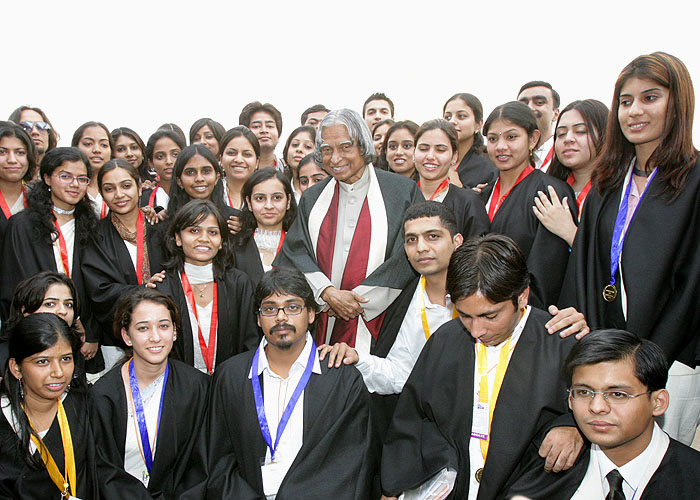

Conclusion
India is well known for its arts, sculpture and culture. If we see our places of worship and other places, we find the innate artistic talent of our people. Ajanta, Ellora, Khajuraho, Konark, Thanjavur, Hampi, Mahabalipuram, Chittannavasal are all cultural signposts of our rich heritage. Similarly, the festival of Dussera, is celebrated in unique ways, in different parts of the country. The elephant procession of Mysore, Dandia of Gujarat, Durga Puja of Kolkatta, Navarthri Golu of Southern India are all manifestations of colour and gaiety of one cultural festivals? various beautiful dimensions. Many festivals like Diwali or Karva Chouth or marriage function bring out the best of designs in the hands of people or on the floors. Thus we can see that the art is in the soul of every Indian and every Indian is influenced by his heritage. If we can marry the innate Indian art with technology modern fashion design can emerge. Our aim should be to create brand India design, using our cultural heritage. Researchers in fashion design should be able to study the psyche of new generation men and women and create the colour, texture and shape to suit the taste based on the wealth of our native artistic talent hidden in every part of the country. The aim of such brand India design should be to penetrate the minds of men and women spread in all parts of the world, through our unique products. This will enable India to tread its own path instead of proceeding in the beaten path. In essence, I would suggest the fashion design community assembled here to make India as leader of fashion technology in the world. This will enable Ministry of Textiles to achieve an export target of $ 70 billion in fashion design and lifestyle products compared to the present $ 23 billion, in the next five years.
Let me congratulate all the graduating students and I wish the members of NIFT success in their mission of transforming India into a fashion capital of the world.
May God bless you.
<<Back
|
|